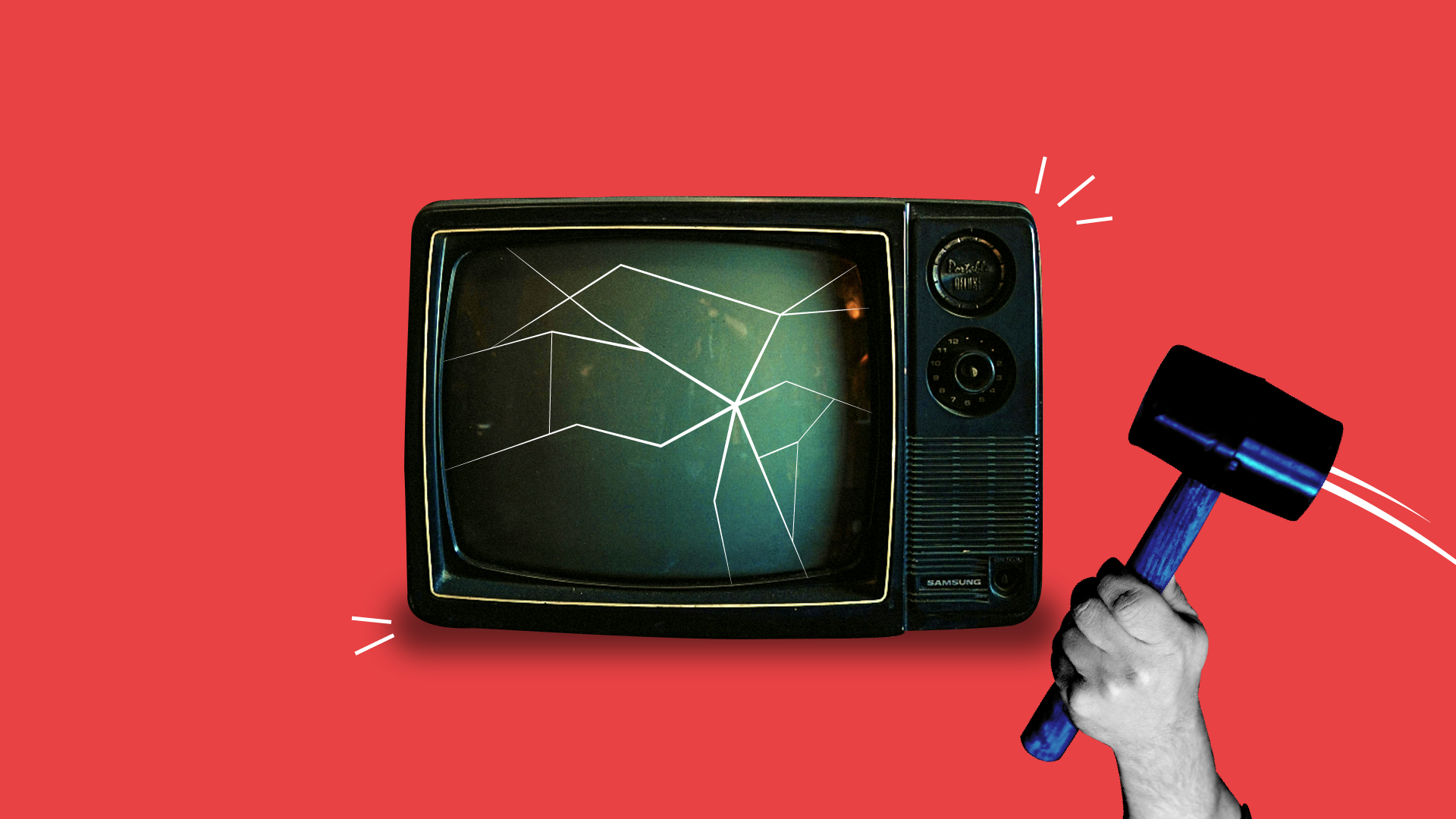
Breaking the Glass Screen: How to Get Your Brand on TV
The Power of TV Advertising
The flickering image of a Bulova watch superimposed on a black-and-white map might not seem much by today's standards. Yet this 10-second commercial, broadcast in 1941, marked an important moment in advertising history – the very first television advert.
The trouble with TV advertising, however, is that everyone is watching, but nobody is interested. We endure the ad breaks, we watch ads with a passive or negative state of mind, and very often the ads are not as good as the product they are selling. The ads are boring, they don’t tell a story, and they fail to generate an emotional response.
And that is the barometer for success.
Since 1941, TV has served as a critical platform for brand storytelling, reaching massive audiences in a way no other channel can quite achieve. With the rise of streaming services and exploding social, some have declared TV advertising dead, but a closer look reveals a different story.
"People like to be entertained. They like to be informed. They like to be inspired. And they like to be persuaded."
Seth Godin
Every Giant Started Small
Every TV advertiser was once a first-timer.
Through the 1970s, a denim brand had dabbled with TV advertising, but their product-facing ads failed to engage people emotionally. By 1985, though, they had grasped the point – they made an ad featuring a young man named Nick Kamen stripping down to his underwear in a laundromat and putting on a pair of jeans. And so, Levi 501s became iconic.
When BH&P’s Darren Savage helped put Wren Kitchens on TV for the first time, the message was around how design elevates the experience of being in the kitchen. It resonated in popular culture, and was based on a distinct insight around the impact that good design can have on your life. At the time, competitor advertising was about the number of drawers, products and features – and if the objective was to bore people into buying something, it achieved it.
The reason the Wren campaign was so successful, was that it was rooted in popular culture. It recognised the critical role that kitchens play - for dining, doing homework, working from home, for dogs and families and parties, a place to be and to live. And it worked.
TV Elicits Powerful Emotions
While digital marketing excels at targeted messaging, television remains unmatched in its ability to evoke powerful emotions. Studies by Johns Hopkins University show that TV commercials activate brain regions associated with memory and emotion more effectively than other forms of media.
Beyond its reach, TV's impact lies in its ability to tap into our subconscious. Research suggests that visual content processed through television stimulates the brain's reward centers more effectively than other media. This neurological response can create a strong emotional connection between the viewer and the brand.
Good TV advertising is about seduction. John Lewis resisted moving onto TV for a long time, and during that period, their issue was now brand trust or knowledge. It was not awareness. BUT the brand had a problem with emotional engagement.
When they DID go on TV, they made certain to maintain the craft and quality of execution across the whole buying funnel. Yes, TV advertising plays a critical role in creating awareness and seduction around the brand, but the evidence is that this also has a huge impact on buying decisions.
And the first one you remember, may not be the first one they aired (Shadows, in 2007). but you still remember one, probably more than one, right?
For every £1 John Lewis spent on TV advertising, they got £12.07 back.
And research supports this – consistently, analysis shows that when people are about to press the button to buy an expensive car, they almost always remember the TV ad, and how it made them feel.
TV advertising plays a distinct, complimentary role, right across the buying funnel.
It’s also not only for “big” brands.
BH&P produces all our client film work to TV standards where we can, giving clients the opportunity to appear on TV – whether targeted to a niche demographic or geographic area, aligned to a particular programming event (like an Alzheimers society ad following a documentary on Alzheimers disease and the need for more research), or both, TV advertising is both more targeted, and more affordable, than ever before.
The Importance of Being Single-Minded
Where brands typically go wrong when planning to go onto TV for the first time (and some repeat the mistake ad infinitum), is trying to do too much.
Fundamentally, you need to laser in on the psychological need you are tapping into. To achieve this, successful TV ads do three things well:
-
-
They have a single-minded objective – to build emotional connection; to create trust; or to amplify a brand value aligned to popular culture, for example.
-
Secondly, they need to shine a spotlight on the product or service being advertised in a way that resolves a psychological tension. When the agency that Darren Savage was working for at the time was charged with developing a TV ad for Lynx deodorant, competitors were all focusing on how nice their products made you smell. For Lynx, the message was different. The Lynx effect. The need is not to smell good, but to change the mood in the room, to grab girls attention, and so forth. Of course, over time, the messaging has shifted, so that grandmas now buy their grandsons Lynx giftsets for Christmas, but the principle remains. Tap into a psychological need, not a product feature.
-
By weaving a relatable story that resonates with your target audience, you can create a lasting impression. Think of the Cadbury Gorilla, or the Guiness Surfers. Different elements in the storytelling that all come together – the idea, the scripting, the casting, the director’s treatment and – of course – the role of music to enhance the emotional impact, is fundamental.
-
"The most powerful way to persuade people is with stories."
David Ogilvy
To do this effectively, you need to consider three key factors – culture, consumers, and competition. Any one of these can lead to the compelling insight that will make your TV campaign memorable. And that’s important, because TV advertising does not typically have a massive immediate impact on sales.
Patience is key.
The emotional impact of creating a connection with a brand through TV advertising can span decades. Think Levi Jeans, Cadbury Gorilla, and galloping Lloyds horses.
Firsts Don't Have to Be Expensive
In an era dominated by digital distraction, television advertising offers a unique opportunity to cut through the noise and connect with your audience on a deeper level.
By understanding the psychology of TV, crafting compelling narratives, and measuring your campaign's impact, you can increase your brand’s impact, and hit goals faster, with a single-minded and emotive TV campaign.
The original Bulova ad, costing just $9, highlights the accessibility that television advertising once boasted. While production costs have undoubtedly risen, there are new ways for brands, particularly first-timers, to tap into TV's power without breaking the bank. Digital programming, and the multiplicity of channels, makes it possible to target niche audiences effectively.
Remember, every great brand started somewhere. To find out more, and to explore whether TV is right for your brand, get in touch.
BLOG
|4 MIN READ
BLOG
|5 MIN READ
BLOG
|4 MIN READ
BLOG
|5 MIN READ
BLOG
|4 MIN READ
BLOG
|2 MIN READ
Sign Up



